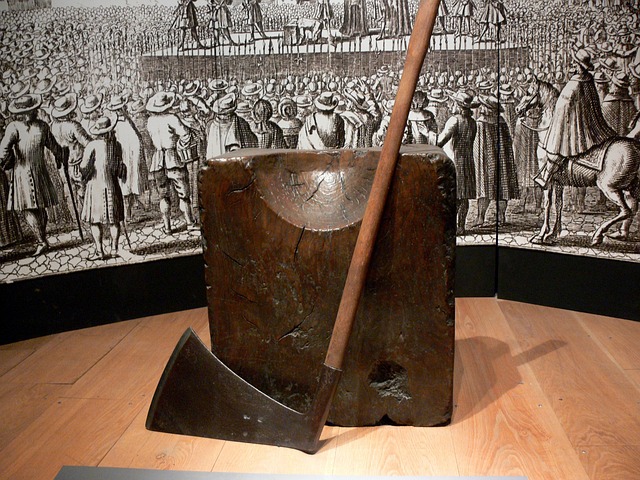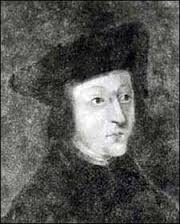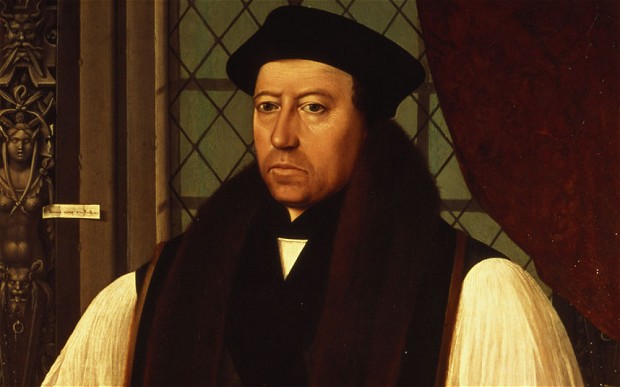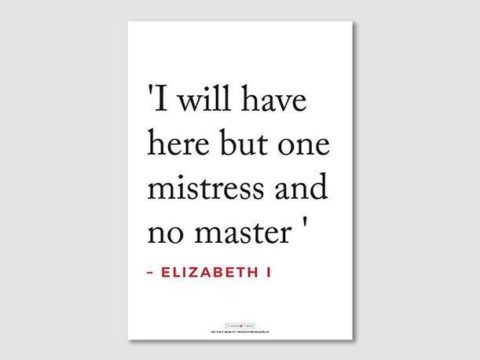Who's Who in Wolf Hall
Biographies of people whose lives entwined with Cromwell
Chapter 3 : Carew - Cromwell
Carew, Sir Nicholas c. 1496 – 1539 Carew was brought up alongside Henry VIII and was a close personal friend, sharing Henry's tastes and skills in athletic pursuits. He was appointed Master of the Horse in 1522, and was also involved in a number of diplomatic missions to France. Carew's wife, Elizabeth Bryan was a cousin of both Anne Boleyn and Jane Seymour. Carew, a religious conservative, had maintained close links with Katharine of Aragon, and her daughter Mary. He did not publicly repudiate the Boleyn marriage, although he was known to dislike Anne.

In due course, Carew was instrumental in replacing Anne with Jane Seymour, even though it meant working with Cromwell, whom he considered a low-born interloper. This religious and political conservatism did not end well. Carew was eventually convicted of involvement in the Exeter conspiracy and executed in 1539.
Cavendish, George c. 1497 – c. 1562– Cavendish, born into the family that produced the Dukes of Devonshire, was Gentleman Usher to Thomas Wolsey and Wolsey's first biographer. Much of our knowledge of Cromwell's time in Wolsey's service comes from Cavendish's work. Cavendish was brother-in-law to Bess of Hardwick, and nephew by marriage of Sir Thomas More.
Books
Thomas Wolsey, the Late Cardinal by George Cavendish
Chapuys, Eustace c. 1490 – 1556 Chapuys was the ambassador to Henry VIII from Charles V, Holy Roman Emperor. He was resident in England from 1529 to 1545. Much of our knowledge of the court of Henry VIII is based on his letters to Charles V and Charles' sister Mary of Hungary who was his Regent in the Low Countries.

Chapuys was a strong supporter of Katharine of Aragon and Princess Mary, both personally, and on behalf of his master. He maintained cordial relationships with Cromwell, and the two often dined together. Often portrayed as Spanish, he was, in fact, from Savoy, in the Franco-Italian border.
Biography
Inside the Tudor Court: Henry VIII and his six wives through the writings of the Spanish Ambassador Eustace Chapuys by Lauren Mackay
Chawfer, Richard A client whom Cromwell represented in litigation in 1522 with William Blount, Lord Mountjoy, the Queen's Chamberlain.
Courtenay, Henry, Marquis of Exeter c. 1498 – 1538. Courtenay was the son of Henry VIII's aunt, Katherine of York, and spent much of his childhood in the royal nurseries with Henry VIII, Margaret, Queen of Scots and Mary the French Queen. Nevertheless, his childhood was overshadowed by the imprisonment of his father and grandfather for alleged Yorkist conspiracies. Following Henry VIII's accession, Courtenay was permitted to inherit the title of Earl of Devon, and he served in the French wars of 1512-13 in the English navy. He grew close to his cousin, the King and was appointed to the Privy Council in 1520.
In 1525, he received the title of Marquis of Exeter. Exeter supported Henry in his annulment proceedings, but no supporter of Anne Boleyn, he collaborated in her downfall. Despite allying with Cromwell over Anne, Exeter resented Cromwell's power, and Cromwell feared Exeter's close relationship with the King. Cromwell accused Exeter of too strong support for Princess Mary, and Henry tested his loyalty by sending him with Charles Brandon, Duke of Suffolk to suppress the Pilgrimage of Grace.

In 1538, Exeter was accused of conspiring with his cousins, Reginald Pole and Henry Pole, Lord Montague to restore Papal authority, and possibly replace Henry himself - Exeter had a claim to be the next male heir, if James V of Scotland were discounted as a foreigner. Despite no evidence being produced, other than conversational snippets made to bear a sinister interpretation, Exeter, Montague and Carew were attainted and executed.
Cranmer, Thomas, Archbishop of Canterbury 1489 – 1556 Cranmer was educated at Cambridge and became a Fellow of Jesus College. He was obliged to resign the fellowship when he married. After the death of his wife, Cranmer was ordained as a priest in 1520.Initially a humanist, Cranmer became more radical in his religion over time. He was consulted on the matter of the King's annulment in 1527, and argued for the marriage being unlawful, putting forward the suggestion that University theologians be consulted across Europe, rather than leaving the matter to the Pope.

In 1533, Cranmer was appointed as Archbishop of Canterbury, and declared the King's first marriage null. Over the remaining years of Henry's reign, although his private inclinations were more reformist than King Henry's, he developed a moderately reformed, but essentially Catholic, church. He worked closely with Cromwell throughout the 1530s.

Under Henry's successor, Edward VI, Cranmer travelled further along the road towards Protestantism and wrote the Liturgy and Book of Common Prayer which are still the foundation of the Church of England. He supported the usurpation of the Protestant Lady Jane Grey and was imprisoned by Mary I. He was burned for heresy in 1556.
Biographies
Thomas Cranmer: A life by Diarmid Macculloch
Thomas Cranmer: Bite size biography by Colin Hamer
Creke, John A friend of Cromwell's who wrote frequent letters, updating him on affairs in Europe.
Cromwell, Anne born c. 1518 daughter of Thomas Cromwell and Elizabeth Wykys. She died young, of plague.
Cromwell, Elizabeth (Bet) d. 1533 A sister of Thomas, she married William Wellyfed, a sheep farmer and had two children, Alice and Christopher, whom Cromwell supported.
Cromwell, Grace born c. 1522 daughter of Thomas Cromwell and Elizabeth Wykys. She died young, of plague.
Cromwell, Gregory c. 1520 – 1551 As Cromwell's only son and only child to survive childhood, great attention was paid to Gregory's education and upbringing. Initally, he was placed under the care of Cromwell's close friend Margaret Vernon, Prioress of a Benedictine convent in Buckinghamshire. Gregory had tutors to teach him, but never seems to have shone academically, although he was praised as diligent. He studied at Cambridge, although without taking a degree, and then, as was customary. lived in the households of various important contacts of his father. In 1537, Gregory married Elizabeth Seymour, widowed sister of Queen Jane Seymour, and thus became brother-in-law to the King. The couple moved to Lewes, although Gregory frequently travelled on missions for his father, and had several children. Gregory was part of the welcoming party sent to greet Anne of Cleves. When Cromwell was arrested, Gregory escaped any involvement, although he lost his courtesy title of Lord Cromwell. He was later granted a barony in his own right, and summoned to Parliament.
Cromwell, John Thomas' uncle.
Cromwell, Katherine sister of Thomas, married Morgan ap William, a lawyer, whose brother was a steward to Lord Scales of Nayland.
Cromwell, Richard c. 1500 – 1544 Born Richard Williams, son of Thomas' sister, Katherine, he was brought up in Cromwell's household. Richard's great-grandson was Oliver Cromwell, Lord Protector. He was a fine jouster and won the King's applause for his feats.
Cromwell, Robert Thomas' cousin and Vicar of Battersea.
This article is available for Kindle, for purchase from Amazon US and Amazon UK.











